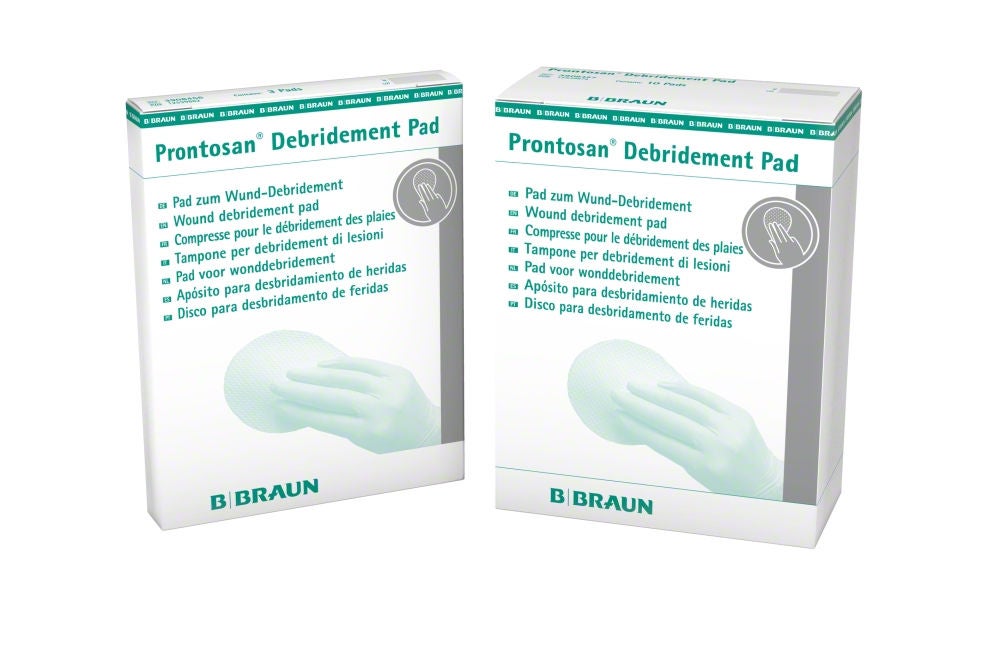You have successfully logged out.
Not registered yet?
Wound Hygiene Stage 2
Soft Mechanical Removal Of Slough And Debris
Proactive debridment is an integral part of wound hygiene, as it will help with any wound not covered with granulation tissue to progress toward healing.1
Medical Professional
This information is meant for medical professionals only. Please confirm that you are a medical professional before accessing the information.
Confirm Yes, I am a health care professional. Cancel No, I am not a health care professional.Mechanical force, in combination with a surfactant or antimicrobial solution are effective ways of breaking up and clearing biofilm.2
Combined use of a topical surfactant-based wound cleansing solution and a debridement pad or gauze will augment cleansing sufficiently to distrupt and remove biofilm.
Debridement decontaminates the wound bed and removes the biofilm, thereby preparing it for dressing application, in line with the principles of wound bed preparation.
Prontosan® Debridement Pad - A New Additon To Complete The Prontosan® Range
The Prontosan® Debridement Pad is designed for soft mechanical debridement of slough and debris. The Prontosan® Debridement Pad removes and binds sloughs and debris, and assists with effective wound bed preparation - new granulation tissue is left intact.
Features:
- Good cleaning and debridement due to microfiber technology
- Soft debridement, no tissue irritation
- Unique droplet shape to allow debridement of cavities and areas difficult to reach
- Blister packaging to allow safe and aseptic soaking of the pad prior to use
- Produces good results even with scaly and necrotic coatings
Micro Technology- Maximum Cleansing
The Prontosan® Debridement Pad uses microfibres technology. Microfibres are very small and utilise 'electrostatic forces' to attract even the smallest particles to them.
Each microfibre has a multiple strand structure, allowing for many more particles of slough and debris to be removed from the wound bed and bound to each microfibre within the pad; not just brushed away as with traditional, much larger monofilament fibres.
There are milions of microfibres in each Prontosan® Debridement Pad for magnified debridement power.
“Hints And Tips”
- Kaehn, K., Pilhexanide: A Safe And Highly Effective Biocide, Skin Pharmacol Physiol 2010, 23 (supplement 1) 7-16.
- Davis, SC. Harding, A. Gil, J. Parajon, F. Valdes J, Solis, M. and Higa, A. "Effectivness of a polyhexanide solution on MRSA biofilms in a porcine wound model" IWJ 1742- 4801, 2017, 1-8.
- Moore, M 0.1% Polyhexanide-Betaine Solution as an Adjuvant in a Case-Series of Chronic Wounds, Surg Technology International, 2016.
- Cutting K, (2010), Addressing the challenge of wound cleansing in the modern era, British Journal of Nursing, 2010 (Tissue Viability Supplement), Vol 19, No 11.
